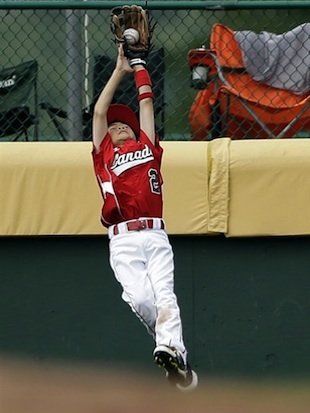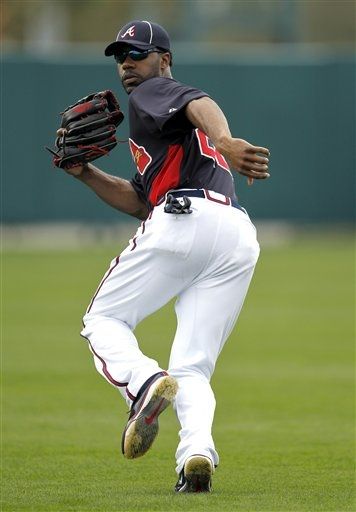Fly balls: Squaring your shoulders correctly
January 8, 2013 by Coach McCreary
Filed under Outfield
When I work with little kids to improve their baseball skills, one of the first things I try to work on is catching the ball
while they are moving. No matter what position they play, they will have to go get the ball and catch while their body is in motion. Not the easiest thing to do when you are just starting to play. However, some of the problems I see in little kids are still found in older kids at the high school level and beyond. Here is one of them that has to do with catching the ball on the run.
Everyone knows that when a sprinter lines up to run, his whole body faces where he wants to go. His shoulders, his hips, and his feet are all squared to the finish line while in the starters block and all stay that way to the finish line. You will never see a sprinter turn his body sideways so that one shoulder leads the other during the sprint. It just doesn’t happen because it would slow him down. However, when many outfielders go after fly balls, especially when they are younger, they do this very thing. Some will even face the ball and run backwards. Often the player doesn’t get to the ball or will catch the ball and fall down afterwards. The photo of the Little Leaguer at right is an example of this kind of play where the outfielder is backtracking on the ball.
The correct method for going back on the ball is shown in the photo underneath. This major leaguer has squared his body (shoulders, hips, and feet) to where the ball is going as opposed to where the ball currently is. When he does this, he will cover more ground
because, like a sprinter, his body is facing where he wants to go making it easier to run. The only difference is an outfielder must turn his head over his shoulder in order to see the ball. If he turns his head AND his shoulders he will slow down and will have poor balance as well.
Of course, this method of going back on the ball is not just for outfielders. Occasionally, infielders will need to go back hard on shallow fly balls in the outfield or in foul territory. Doing the same with their body positioning will allow them to get to more balls as well.







Leave a Reply